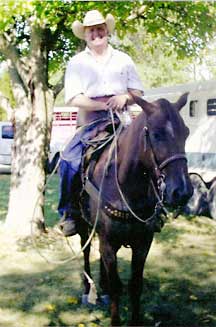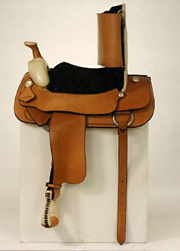Updated: 2/16/07
Former BGCT leader claims
race a factor in Valley probe
By Ken Camp
Managing Editor
Otto Arango, the central figure in an investigation that revealed misuse and mismanagement of Texas Baptist church-starting funds in the Rio Grande Valley, was singled out for suspicion because he was a financially successful Hispanic from the Dominican Republic, another key figure in the probe has asserted.
E.B. Brooks, former head of the Baptist General Convention of Texas Church Starting Center, made the assertion in a 25-page document he sent to members of the BGCT Executive Board and selected Baptist Building staff.
“The recent attack on my credibility and honesty has been painful,” Brooks wrote in a cover letter to the board. “The document enclosed is my effort to state the other side of the story—one that has not been told. It is not meant to be a defense. It is my effort to provide fact, fairness and balance.”
A five-month independent investigation initiated by BGCT Executive Director Charles Wade and the Executive Board’s officers uncovered evidence that 98 percent of the 258 church starts re-ported by Arango and two of his protégés in the Rio Grande Valley no longer exist. The investigators also discovered some of the congregations were “phantom churches” that existed only on paper.
The investigators reported the BGCT gave about $1.3 million to support church starts associated with Arango and his two associates—a figure Brooks disputed.
After he retired from the BGCT, Brooks became executive director of the Piper Institute for Church Planting. Arango was president of the nonprofit corporation, which evolved from the Institute for Church Planting he founded in South Texas. At a called meeting last November, the Piper Institute’s board of directors unanimously voted to dissolve the corporation, effective Dec. 31.
“I know numerous other pastors of churches who raise cattle, write and sell books, construct and deliver seminar ministries, import goods and sell them, and utilize other means of enhancing their income. They live economically good lives, and no one complains about them.”
–E. B. Brooks
|

• See complete list
of Valley funds scandal articles |
In the document he mailed to the BGCT Executive Board, Brooks maintained the church-starting initiative in the Rio Grande Valley—particularly Arango’s strategy of training Hispanic laymen as church starters—was a noble experiment that failed.
“This pilot or experimental project was treated no differently than others before and after my tenure as leader of church planting. Some of the projects were less expensive, and some were more expensive. Some of them were less supervised; some of them more so. Some were successful, and some were not,” he wrote.
The key difference in the Rio Grande Valley project—and the reason it was targeted for scrutiny—centered on Arango’s lifestyle and ethnicity, Brooks insisted.
“He has been the target of several persons for many years, preceding the development of the church-starting project in the Rio Grande Valley,” he wrote. “His home and vehicles are, obviously in the mind of some, not proper for a Hispanic pastor. … To the accusers, the only way he would have such nice things, as a nice home and cars, is for him to be a thief.”
Photos that circulated on the Internet illustrating Arango’s lifestyle pictured a Jaguar, a Range Rover and a house purportedly valued at $300,000.
The investigators found no evidence Arango or any other person profited personally from BGCT church-starting funds, Brooks noted.
However, in their report, the investigative team noted they lacked subpoena power. “The investigators did not have access to records to determine Dr. Arango’s income or the purchase price of his home, cars or other property,” they wrote.
But Brooks asserted other pastors have not been subject to the kind of scrutiny Arango faced, raising the question of whether race was a factor in the inquiry.
“I know numerous other pastors of churches who raise cattle, write and sell books, construct and deliver seminar ministries, import goods and sell them, and utilize other means of enhancing their income. They live economically good lives, and no one complains about them,” he wrote.
“I realize that the BGCT is not financing ministry with and through them; however, the source of legitimate financial gain should not be the question. I can supply the names of pastors, denominational workers and others who have been handsomely rewarded by the BGCT for legitimate ministry activity. The pastors that I know, who have more than one source of income, are Anglo; maybe that is the difference.”
Brooks compared the unsuccessful church-starting experiment in the Valley to other BGCT projects that failed to yield expected results, such as apartment-based indigenous satellite units—or ISUs—that strategists hoped would grow into churches.
“By the time I was given responsibility to lead the church-starting effort, almost none of the ISUs could be found,” he wrote. “No outcry for investigation into that failure was heard. As with Dr. Arango, some of the pastors of sponsor churches lived in very nice houses and drove very nice cars. Of course, all of them were Anglo.”
Quoting a note he sent last September to the investigative team, Brooks also wrote: “There was jealousy, not only in the Valley, of Otto because of his success in charismatically reaching Hispanic pastors in Texas. … There was envy of Dr. Arango because of his ability to create and promote. … There was envy of Dr. Arango because of his personal financial success.
“This jealousy, resentment, suspicion and spread of it brought about mistrust. So, everything that Dr. Arango did, or was related to, or expressed interest in was suspect.
“There is also the factor of cultural conflict. Though many, if not most, would deny it, the fact that Otto Arango is from the Dominican Republic and not from Mexican background is a factor. I have heard several Hispanics say that he doesn’t really understand the Mexican culture.”
Other assertions Brooks made in the document included:
• Church-starting efforts in the Rio Grande Valley made a significant impact. Iglesia Bautista de la Communidad in Hidalgo grew from a few families to more than 500 members, and at least 20 cell churches meet regularly, he noted. Christiana Alianza in Pharr likewise grew to be a strong church that has helped launch other congregations beyond the Valley. Not all of the church starts survived, but the average life of 86 congregations started by Alianza was 15 months, he said.
“Fifteen months of life is not meaningless, and in my humble opinion, not a waste,” he wrote. “They report, up to December of 2006, 698 baptisms for these congregations. Since the earliest churches started in 2001, that is almost 140 baptisms per year. … The kingdom has increased.”
• Earlier investigations contributed to the failure of the church-starting initiatives in the Valley. “In late 2002 or early 2003, a local pastor made visits to some of the homes where house churches were being started, knocked on their doors and told occupants that he was conducting an investigation as to whether there was a church meeting there. A few months later, the Federal Bureau of Investigation knocked on some of the doors, showed their badges and asked similar questions,” he wrote.
“Then the Valley became abuzz with the rumors, and leaders of the Valley were questioning the work. Add to that a rumor that was started among the house churches which said … if a group was meeting in your house, and you signed a covenant application, the BGCT could ‘take over ownership of your house.’
“To the typical Texas Baptist Anglo mind, that is ludicrous. However, in Mexico, the state owns church buildings and property. It is not a great leap to believe that it could be done by an entity (Baptist convention) that they really didn’t understand.”
Since many of the house-church pastors were undocumented, they feared losing their jobs, their homes and the ability of their children to attend public school in the United States, he added.
“These are real fears and greatly affected the ability of sponsor churches to continue their mission activities and protect their people,” he wrote.
• The investigation was biased and unfair. “It is very frustrating to me that there was a ‘trial.’ The prosecutors brought their evidence. They were hired by the jury, the Executive Board of the BGCT. There was no judge, and the defendants were not present and had no representation. Judgment was made, and the Baptist press distributed the ‘scandalous’ story to the world that $1.3 million of BGCT money had been misused—a statement that is wrong by the accounting of the investigators themselves,” he wrote.
When asked for an estimate of how much church-starting money was misused and what outcome he hoped to achieve by mailing his document to members of the Executive Board, Brooks replied by e-mail, “I will make no comment to the Baptist Standard.”
Wade defended the probe he and Executive Board officers initiated, and he flatly denied that racism played any role in it.
“The investigation was conducted by impartial attorneys with no prior involvement in this situation, and I have no reason to doubt the integrity of their efforts. The implication that race played a role in this process is patently untrue,” Wade said.
The complaints about inappropriate activity that triggered the probe came primarily from Hispanic pastors, and one of the two primary investigators is Hispanic, he noted.
“This situation had nothing to do
with race; it had everything to do with guidelines and procedures for distributing BGCT funds not being followed,” Wade continued.
“We are moving forward to establish new policies and procedures that will provide a better, clearer system of checks and balances in handling our church starting efforts. Texas Baptists are committed to starting more churches in order to reach more people for Christ and to do it in a way that reflects the highest standards of integrity.”
Executive Board Chairman Bob Fowler characterized the entire situation regarding the misuse of church-starting funds in the Valley as “not a comedy of errors, but a tragedy of errors” stemming in part from failed communication. And—to a significant degree—he asserted the investigation was hampered by a lack of cooperation by a few BGCT Executive Board staff.
“The most troubling aspect of the entire Valley funds misapplication episode has always been trying to understand the motivation of those who either authorized the funds or oversaw their use. Dr. Brooks’ comments fill in part of that gap,” Fowler said. “I accept that Otto Arango’s new model was viewed as a way to rev up church starting in largely Hispanic areas. What both the investigators’ report and Dr. Brooks’ response clearly indicate is that there were many cross-cultural failures in communications, as well as expectations.”
To some degree, as Brooks noted, “the kingdom (of God) has increased” because of the experimental project in the Valley, Fowler agreed. But it was not an effective church-starting program, and it did not conform to the convention’s church-starting policies.
“It may well have been that this model could have been a reasonably effective kingdom-builder in reaching the Hispanic populations, but it was dressed up as a church-starting program, at least in the view of those who provided the money,” he said.
If the investigators work seemed rushed and incomplete, it was due in large part to the inability of some BGCT Executive Board staff—and the apparent unwillingness of a few—to cooperate, Fowler observed.
“Despite the best efforts of most of the staff to cooperate with our attorneys, the organization was simply not well equipped to support their efforts as efficiently or as timely as was needed,” he said. “I cannot say what was in (former Church Starting Center Director) Abe Zabaneh’s mind in his lack of responsiveness to the continual repeated requests from the attorneys as shared by them with us. Let me speculate that neither Zabaneh nor Brooks ever recognized that the Valley situation was a pot ready to boil over. Both could have done much more earlier to prevent the damage of a promising paradigm going wrong.”
The Executive Board staff’s “woefully inadequate” information tracking systems presented a time-consuming and costly impediment to the investigation, he added.
“I believe a significant portion of the dollars we spent on the investigation was for tedious hand calculation and analysis of matters that our new system should reduce to simple computer runs,” he said.
“Although cooperation with the investigation was generally very good, some of our staff—including Zabaneh—may not have realized that their lack of timely attention to the requests of the attorneys cost BGCT significant additional dollars.”
The investigators worked under a deadline, and “the entire process was frustrating to everyone involved,” but the finished report was an accurate “snapshot” of what was discovered and was verifiable, Fowler said, adding that he stood by the results of the report.
“This result could have been avoided. It should have been avoided,” he said. “The Executive Board is committed to avoiding anything similar in the future, and so is the leadership of the staff.”
News of religion, faith, missions, Bible study and Christian ministry among Baptist churches, in Texas, the BGCT, the nation and around the world.






